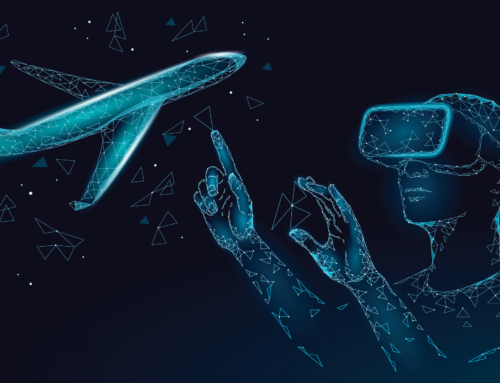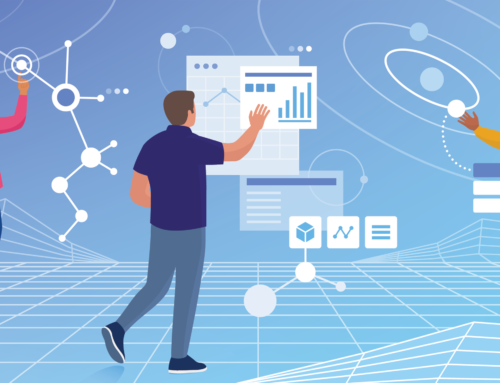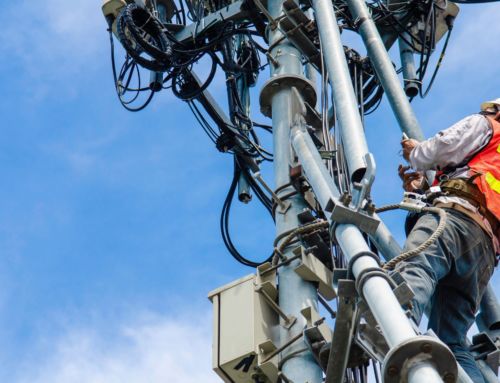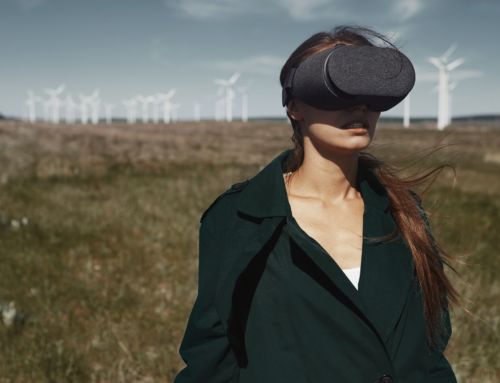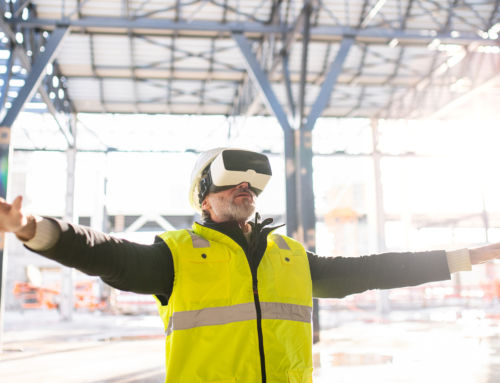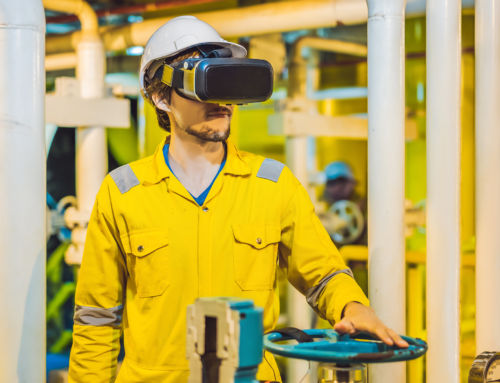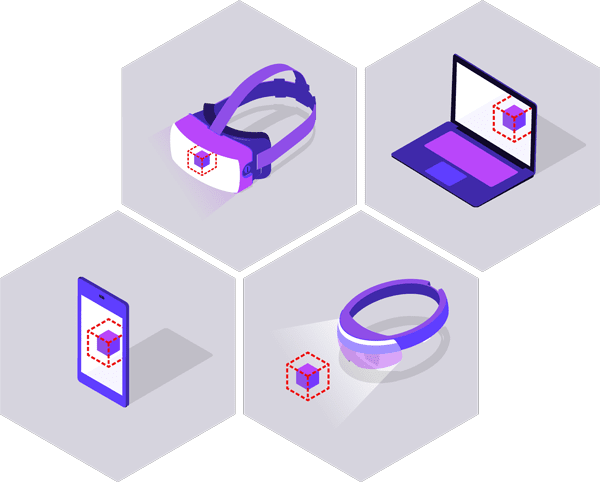Key Takeaways
Introduction
The metaverse workplace. Is this the future of remote work? Many experts seem to think so. With advances in technology, we can now experience virtual reality in a way that was once only possible in science fiction. This has led to the development of immersive workspaces, which allow us to work from anywhere in the world.
In this blog, we ask “what is the metaverse workplace?”, explore three different virtual workspaces, discussing the benefits and drawbacks of each one.
What is the Metaverse Workplace?
The metaverse workplace is a term for virtual reality environments that allow you to work from anywhere in the world. An immersive space that can be customised to meet your needs and preferences, providing a variety of benefits, including increased productivity, flexibility, and creativity. It also eliminates the need for expensive office space and equipment.
Metaverse workplaces are beneficial in the post-pandemic world because it allows workers to connect from anywhere in the world. Workers can communicate and collaborate without having to come into contact with each other, removing risks of illness and reducing travel costs.
Virtual Spaces
Within the Metaverse we can create a virtual space that revolutionises virtual work. When in a physical office or physical space, employees get their social interaction from standing around the coffee machine, lunch breaks, or attending happy hours. This would not usually be possible with a remote working environment, but virtual spaces allow real people to be in the same room and have a real-life experience through their digital avatars, which could be a game-changer.
Within the Metaverse we create digital workstations where the remote person can complete independent work but also interact with others. Even features like digital whiteboards can help team members solve problems and approach challenges within meetings.
Benefits of the Metaverse
The metaverse can enhance the remote work experience in several ways.
First, there is no great difference between “remote” and “home.” The metaverse office looks and feels real, but you can still feel like you’re at home. This might be especially helpful if your commute would otherwise take up a significant chunk of your day.
Second, the metaverse can provide a more social environment for remote workers. In the metaverse, you can have face-to-face meetings with colleagues, attend company events, and take part in group activities. This can help to reduce feelings of isolation and loneliness that are often associated with working from home.
Third, the metaverse can help to improve productivity. In the metaverse, you have access to all of your tools and resources, and you can work in a distraction-free environment. This can be helpful for tasks that require focus and concentration.
Fourth, it is flexible and customizable. You can choose the environment that best suits your needs and preferences. For example, you can have a virtual office with a view of the Eiffel Tower or a quiet space in the woods.
Finally, it is scalable. You can add or remove employees as needed, and you can expand your office to accommodate growth. This is helpful for businesses that are expanding rapidly.
Drawbacks to Virtual Workspaces
Virtual workspaces have several benefits, but they also have some drawbacks.
First, a virtual workspace can expensive to build and maintain. This might be prohibitive for small businesses or startups.
Second, while immersive technologies are fairly established in business environments today, virtual workspaces are still a new concept with limited case studies. As a result, it may take time to build the optimal environment for your team.
Finally, the Metaverse and the concept of virtual working is not yet widely accepted. Some people are hesitant to adopt this new technology.
How will this deliver value to businesses?
The use of virtual reality and the metaverse workplace will:
- Enable more hybrid work interactions, boosting productivity
- Revolutionise the way we socialise and meet others
- Move towards a new era of productivity and collaboration
- Redefine work for the post-pandemic era
- Enable more hybrid work and social interactions
- Be part of the next step in the evolution of work
A financial benefit is that work in the metaverse saves businesses money as they can pay less for office space and rates.
The metaverse is a social space that can help remote workers connect and feel less isolated. In the metaverse, workers can attend company events, take part in group activities, and have face-to-face meetings with colleagues. This can help to reduce feelings of isolation and loneliness that are often associated with working from home.
The metaverse is also a productive space that can help workers focus and concentrate on tasks requiring attention. You have access to collaborative tools and resources in the metaverse, so you can work in a distraction-free environment.
Virtual workspaces are flexible and customizable, which means they can be tailored to meet the needs of businesses of all sizes. In the metaverse, companies can expand their office to accommodate growth.
The metaverse is also scalable, which means businesses can add or remove employees as needed. This is helpful for companies that are expanding rapidly.
Examples of Metaverse Workplaces
As you can see, there are several advantages to working in the metaverse. These spaces offer flexibility, creativity, and productivity, though there are drawbacks. Here are some examples of how other companies happen to be using the Metaverse for their workplaces and why they’re convinced that this is the future of work.
Horizon Workrooms – Meta (Facebook)
Meta’s dream of the metaverse isn’t fully built out yet, but their virtual office product is. It’s called Horizon Workrooms, which is available on the Oculus Quest 2. Its benefits are that it’s affordable for businesses, fully immersive, and easily accessible. Facebook has already started to use it within their teams. Within the space, you can access your current technology from your workstation, like your computer or keyboard.
A drawback with Horizon Workrooms is that it is only compatible with Meta’s VR devices. Additionally, Workrooms is still in Beta Testing so it could have problems which have not been resolved yet.
Tangle
Tangle is a non-VR virtual office product, which is great for accessibility and testing within your company. It’s available on a desktop, so there is no need to purchase any other equipment for the people in your organisation. In addition to the ease of access, another benefit of Tangle is its friendly user interface. It can help build cohesive remote teams.
A drawback of Tangle is that it’s a less immersive experience because it isn’t VR. This means you don’t get to feel the presence in 3D of others or interactive objects.
VISIONxR™
This is our virtual collaboration tool. We built VISIONxR™ to be completely customisable based on the needs of clients.
A benefit of this is that it is compatible with all devices (PC Screen, VR Headsets, Tablets and Mobile). It’s built around collaborative working and training, which can be great for increasing a company’s remote working experience.
One caveat however, is that VISIONxR™ is not an off-the-shelf product. There would be time required to customise the virtual environment based on your needs and then integrate this into your current business processes.
Others
Microsoft, Amazon, Apple, and Google all have mentioned creating their own spaces within the Metaverse. We don’t know much yet on how these products will manifest, but these could be companies to watch for future metaverse workplaces.
Is this the future of work?
The Metaverse is probably not for everyone, but it does have a place and will be valuable in the right use cases. For example, it can be helpful for businesses that are expanding rapidly or that require a lot of collaboration between employees. It can also be helpful for tasks that require focus and concentration.
The metaverse workplace is still in its early stages of development, but it has the potential to revolutionise the way we work. It is flexible, scalable, and customizable. It can help to improve productivity and creativity. It also can reduce the cost of office space and equipment. The metaverse workplace is the future of remote work.
VISIONxR™ can help you to work from anywhere in the world by working in the metaverse.
Request a demo today to see how we can help you.
Key Takeaways
Introduction
The metaverse workplace. Is this the future of remote work? Many experts seem to think so. With advances in technology, we can now experience virtual reality in a way that was once only possible in science fiction. This has led to the development of immersive workspaces, which allow us to work from anywhere in the world.
In this blog, we ask “what is the metaverse workplace?”, explore three different virtual workspaces, discussing the benefits and drawbacks of each one.
What is the Metaverse Workplace?
The metaverse workplace is a term for virtual reality environments that allow you to work from anywhere in the world. An immersive space that can be customised to meet your needs and preferences, providing a variety of benefits, including increased productivity, flexibility, and creativity. It also eliminates the need for expensive office space and equipment.
Metaverse workplaces are beneficial in the post-pandemic world because it allows workers to connect from anywhere in the world. Workers can communicate and collaborate without having to come into contact with each other, removing risks of illness and reducing travel costs.
Virtual Spaces
Within the Metaverse we can create a virtual space that revolutionises virtual work. When in a physical office or physical space, employees get their social interaction from standing around the coffee machine, lunch breaks, or attending happy hours. This would not usually be possible with a remote working environment, but virtual spaces allow real people to be in the same room and have a real-life experience through their digital avatars, which could be a game-changer.
Within the Metaverse we create digital workstations where the remote person can complete independent work but also interact with others. Even features like digital whiteboards can help team members solve problems and approach challenges within meetings.
Benefits of the Metaverse
The metaverse can enhance the remote work experience in several ways.
First, there is no great difference between “remote” and “home.” The metaverse office looks and feels real, but you can still feel like you’re at home. This might be especially helpful if your commute would otherwise take up a significant chunk of your day.
Second, the metaverse can provide a more social environment for remote workers. In the metaverse, you can have face-to-face meetings with colleagues, attend company events, and take part in group activities. This can help to reduce feelings of isolation and loneliness that are often associated with working from home.
Third, the metaverse can help to improve productivity. In the metaverse, you have access to all of your tools and resources, and you can work in a distraction-free environment. This can be helpful for tasks that require focus and concentration.
Fourth, it is flexible and customizable. You can choose the environment that best suits your needs and preferences. For example, you can have a virtual office with a view of the Eiffel Tower or a quiet space in the woods.
Finally, it is scalable. You can add or remove employees as needed, and you can expand your office to accommodate growth. This is helpful for businesses that are expanding rapidly.
Drawbacks to Virtual Workspaces
Virtual workspaces have several benefits, but they also have some drawbacks.
First, a virtual workspace can expensive to build and maintain. This might be prohibitive for small businesses or startups.
Second, while immersive technologies are fairly established in business environments today, virtual workspaces are still a new concept with limited case studies. As a result, it may take time to build the optimal environment for your team.
Finally, the Metaverse and the concept of virtual working is not yet widely accepted. Some people are hesitant to adopt this new technology.
How will this deliver value to businesses?
The use of virtual reality and the metaverse workplace will:
- Enable more hybrid work interactions, boosting productivity
- Revolutionise the way we socialise and meet others
- Move towards a new era of productivity and collaboration
- Redefine work for the post-pandemic era
- Enable more hybrid work and social interactions
- Be part of the next step in the evolution of work
A financial benefit is that work in the metaverse saves businesses money as they can pay less for office space and rates.
The metaverse is a social space that can help remote workers connect and feel less isolated. In the metaverse, workers can attend company events, take part in group activities, and have face-to-face meetings with colleagues. This can help to reduce feelings of isolation and loneliness that are often associated with working from home.
The metaverse is also a productive space that can help workers focus and concentrate on tasks requiring attention. You have access to collaborative tools and resources in the metaverse, so you can work in a distraction-free environment.
Virtual workspaces are flexible and customizable, which means they can be tailored to meet the needs of businesses of all sizes. In the metaverse, companies can expand their office to accommodate growth.
The metaverse is also scalable, which means businesses can add or remove employees as needed. This is helpful for companies that are expanding rapidly.
Examples of Metaverse Workplaces
As you can see, there are several advantages to working in the metaverse. These spaces offer flexibility, creativity, and productivity, though there are drawbacks. Here are some examples of how other companies happen to be using the Metaverse for their workplaces and why they’re convinced that this is the future of work.
Horizon Workrooms – Meta (Facebook)
Meta’s dream of the metaverse isn’t fully built out yet, but their virtual office product is. It’s called Horizon Workrooms, which is available on the Oculus Quest 2. Its benefits are that it’s affordable for businesses, fully immersive, and easily accessible. Facebook has already started to use it within their teams. Within the space, you can access your current technology from your workstation, like your computer or keyboard.
A drawback with Horizon Workrooms is that it is only compatible with Meta’s VR devices. Additionally, Workrooms is still in Beta Testing so it could have problems which have not been resolved yet.
Tangle
Tangle is a non-VR virtual office product, which is great for accessibility and testing within your company. It’s available on a desktop, so there is no need to purchase any other equipment for the people in your organisation. In addition to the ease of access, another benefit of Tangle is its friendly user interface. It can help build cohesive remote teams.
A drawback of Tangle is that it’s a less immersive experience because it isn’t VR. This means you don’t get to feel the presence in 3D of others or interactive objects.
VISIONxR™
This is our virtual collaboration tool. We built VISIONxR™ to be completely customisable based on the needs of clients.
A benefit of this is that it is compatible with all devices (PC Screen, VR Headsets, Tablets and Mobile). It’s built around collaborative working and training, which can be great for increasing a company’s remote working experience.
One caveat however, is that VISIONxR™ is not an off-the-shelf product. There would be time required to customise the virtual environment based on your needs and then integrate this into your current business processes.
Others
Microsoft, Amazon, Apple, and Google all have mentioned creating their own spaces within the Metaverse. We don’t know much yet on how these products will manifest, but these could be companies to watch for future metaverse workplaces.
Is this the future of work?
The Metaverse is probably not for everyone, but it does have a place and will be valuable in the right use cases. For example, it can be helpful for businesses that are expanding rapidly or that require a lot of collaboration between employees. It can also be helpful for tasks that require focus and concentration.
The metaverse workplace is still in its early stages of development, but it has the potential to revolutionise the way we work. It is flexible, scalable, and customizable. It can help to improve productivity and creativity. It also can reduce the cost of office space and equipment. The metaverse workplace is the future of remote work.
VISIONxR™ can help you to work from anywhere in the world by working in the metaverse.
Request a demo today to see how we can help you.








